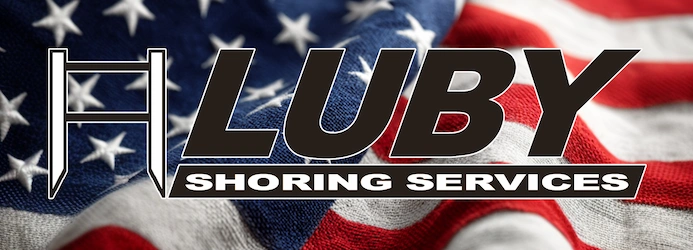Shoring is the most economical and safest method of protecting trench workers.

Cave-ins are the biggest hazard faced by the trench workers. An unstable trench can collapse and kill or injure the workers at any time. So it is essential to have a suitable protective system in place.
A number of methods like shoring, shielding, sloping and benching are available to protect the workers. Among them, shoring is the most economical and efficient.
Reasons for Cave-Ins
There are a number of factors which can influence the stability of the trench. Some of them are:
- The kind of soil and its moisture content.The kind of soil and its moisture content.
- Unfavorable weather conditions.
- Improper installation of the trench box or support system.
- Vibration.
- Depth of the excavation.
- The duration of time for which the trench is left open.
- Surcharge or excessive weight near the excavation.
- Adjacent structures and buildings.
- Previous soil disturbances or excavations.
Other Hazards Involved in Trenching
Besides cave-ins, trench workers face some other dangers also:
- They may trip, slip or fall while entering, egressing or working in the trench.They may trip, slip or fall while entering, egressing or working in the trench.
- The workers may not have sufficient protective equipment.
- They may come into contact with the overhead electrical conductors or the underground utilities.
- Working with heavy equipment near the excavation can be dangerous.
- Traffic on the public roads and the site may pose a danger.
- Working in hazardous atmospheres and confined spaces may prove to be harmful.
- There are chances of being hit by falling equipment, materials or vehicles in the excavation.
- The adjacent structures may become unstable because of the excavation and pose a problem.
- It may be risky if the excavated material is not stored at a suitable distance from the trench.
- Finally, water hazards like flooding can cause accidents.
Benefits of Trench Shoring
In the olden days, sloping and benching were used to prevent the sides from collapsing while digging deep holes. In sloping the walls of the trench slope at an angle so that they do not cave-in. Benching or terracing is a method in which the sides of the trench are formed in steps in order to prevent them from collapsing.
Sloping does not require any additional equipment. It is quite a safe procedure if the degree of the slope is proper and the weather is favorable.
But in the modern days shoring and shielding are considered to be the most economical and safest methods of protecting trench workers from a cave-in. At an excavation site shields protect the workers from a cave-in. Shores support the walls of the excavation with a system of hydraulic cylinders and stop them from collapsing.
Shoring is more beneficial in some situations because of its flexibility and versatility. It is very useful for spot bracing. This method is most suitable when the work is being done near sidewalks or curbs, around existing utilities, or any place where a backhoe or mini-excavator is used.
Shores are lightweight. The workers can easily install and remove them from above the trench.
St. Louis Trench Shoring
Get in touch with our St. Louis trench shoring services team to talk about your project. Call us today at (636) 660-7467 or fill out our online contact form.
